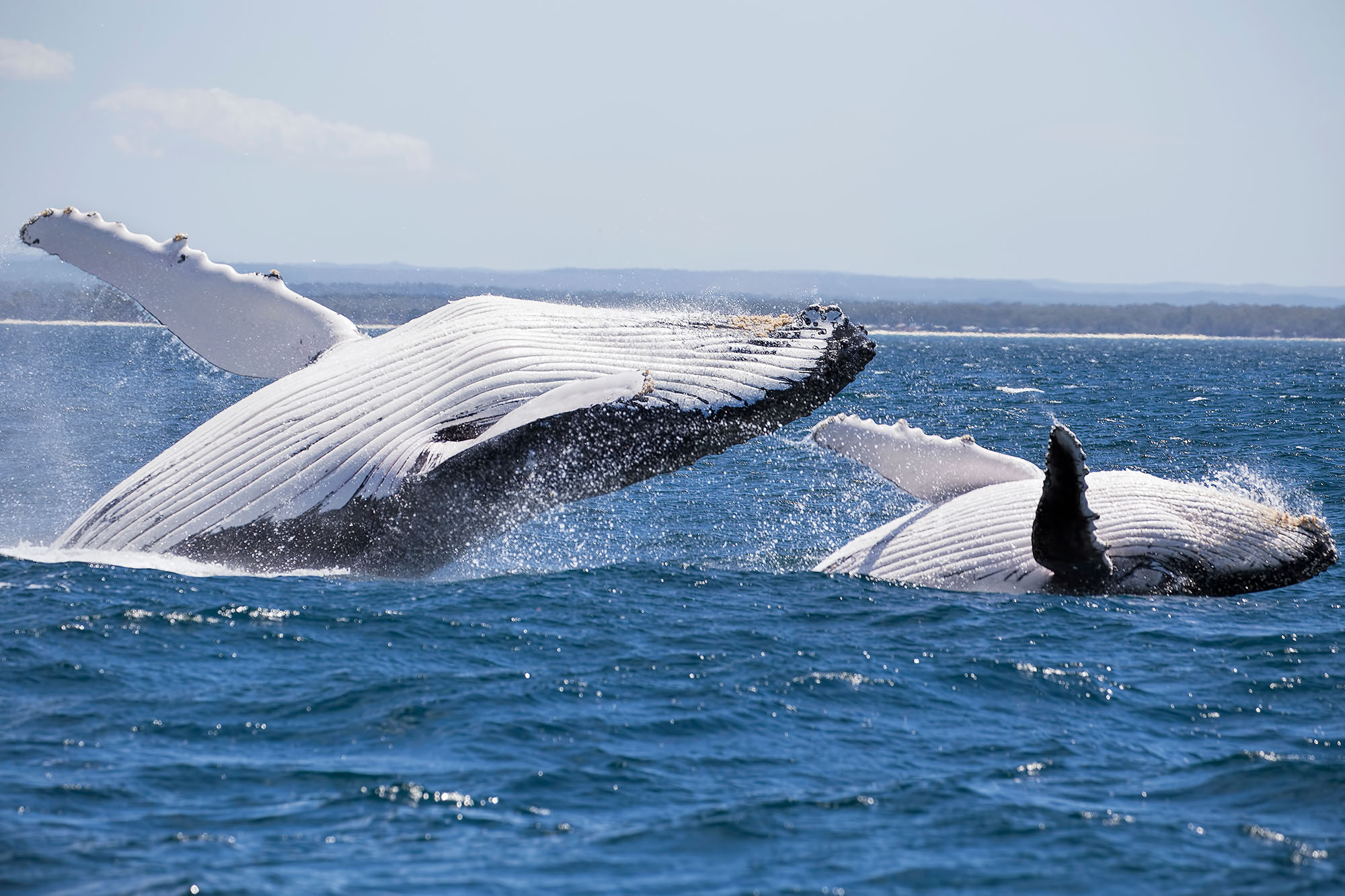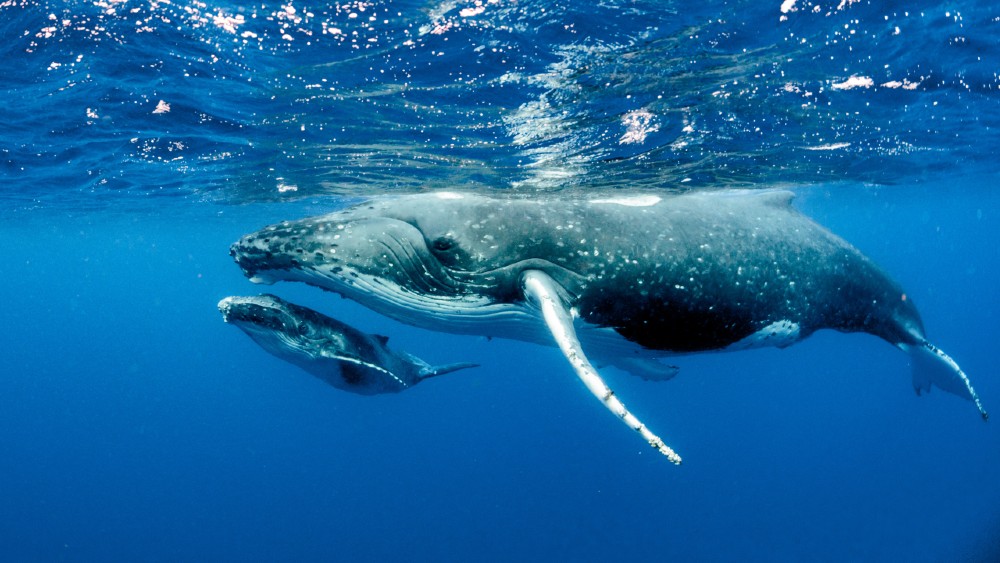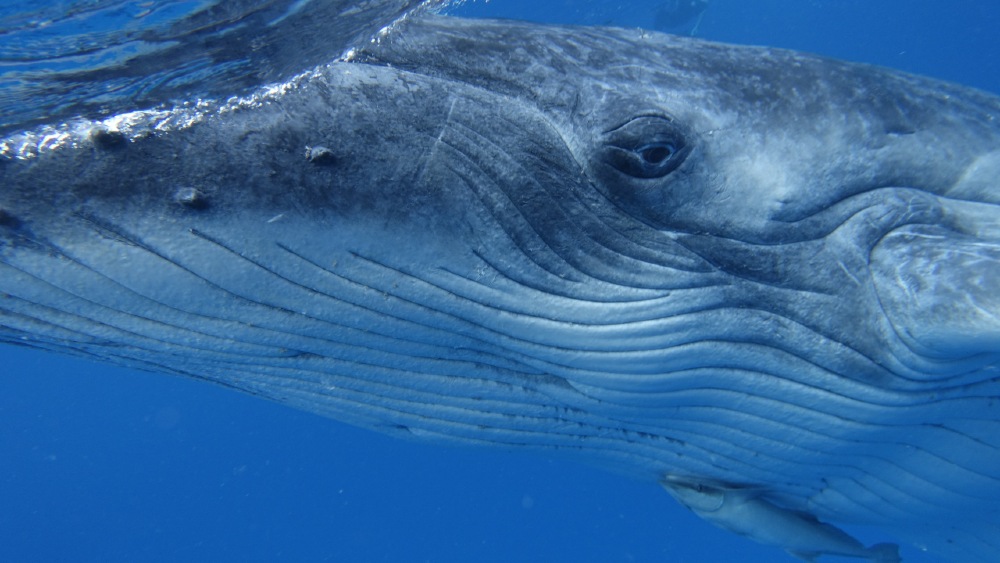In Jervis Bay, we are well known for our variety of fascinating marine life. On an eco cruise with Jervis Bay Wild, aside from spectacular scenery, you’re also getting the opportunity to closely observe the habitat, habits, and activities of some of our resident fauna: bottlenose dolphins, Australian fur seals, and (in season) humpback whales. For any species, a major part of their lifestyle involves the foods they eat for survival. Today, let’s take a look at what delectable dishes are on the menu for our ocean friends.
The Dining Habits of the Humpback
Young humpbacks begin by nursing the milk of their mothers. (On our Jervis Bay Wild whale watching tours, we often see mothers nursing their young!) This milk helps the young whale grow until it learns to hunt the more common foods of the humpback, such as krill, squid, and various types of fish like cod and mackerel. The humpback is a baleen whale, which means it doesn’t have teeth but rather has bristles that catch prey through ‘filter feeding”. Whales swim towards groups of their prey with open mouths, hoping to catch their dinner. Sometimes, whales work together in a group to herd fish into an enclosed space, making it easier for them to be caught and consumed. Because of their lengthy annual migrations, humpback whales tend to eat heartily during the summer months, storing the nutrition for their travels in the autumn and winter.
Australian Fur Seal Feasts
Favourite dining options of the Australian fur seal include bony fish, lobster, birds, and squid. Spending much of their time on the rocky coastline, these largest of Australian seals are skilled hunters, who dive into the water to surprising depths to capture their meals. Seals are most comfortable in the water, and can spend many weeks out at sea hunting and catching food sources. During mating season, large numbers of fur seals will be found along the shores together. When female seals are caring for their young, they will hunt close to the shore for their food, remaining protectively nearby their juvenile seal.
Breakfast, Lunch, & Dinner for Bottlenose Dolphins
In Jervis Bay we have more than 70 resident bottlenose dolphins. Our eco cruise guests love to watch these animals at play. Bottlenose dolphins have a varied diet and enjoy many sea creatures as food sources, including crabs, squids, and more. The most common (and perhaps their favourite) are various types of fish. Surprisingly, dolphins consume a large amount of food per day, and may eat up to 13 kilos daily. Like the humpback whales, pods of dolphins sometimes utilise herding manoeuvres in their hunt for fish. Other methods include hitting the prey with their bodies to startle the creature and make for an easy kill. It’s also worth noting that bottlenose dolphins do not chew with their teeth to grind their food, rather using vigorous movements or even the assistance of the sea floor to break down their food for easier consumption.
Come along on a Jervis Bay Wild eco cruise and perhaps you’ll catch your own glimpse of these fine creatures during mealtime!





